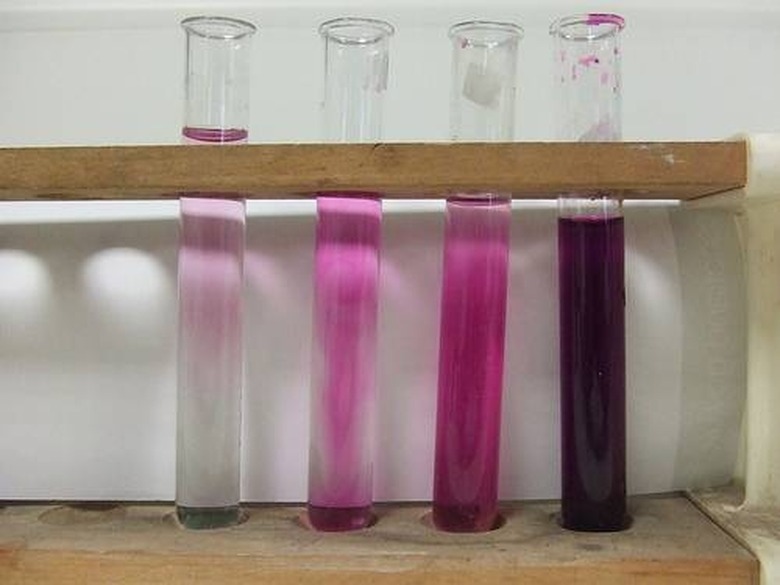The Formula For Potassium Permanganate
Potassium permanganate has the chemical formula KMnO4, where the "4" is a subscript below oxygen. It is a common oxidizing agent often used in titrations due to its color and redox potential. When reduced by another chemical, it loses its distinctive pink-purple color and becomes colorless. It is used commercially primarily due to its color and oxidative potency.
History
History
Potassium permanganate was discovered in 1659. Its chemical formula was discovered soon after. At the time, its main use was in photography since its staining potential can be used in the development of slides. It is still sometimes used for this purpose, along with other chemicals, especially when preparing black-and-white photographs.
Chemical Components of the Formula
Chemical Components of the Formula
Given the formula for potassium permanganate, KMnO4, its constituent elements are potassium (K), manganese (Mn), and oxygen (O). The formula indicates that there is 1 mole K, 1 mole Mn, and 4 moles O per mole of KMnO4. In other words, the mole fraction of O is 1/6, the mole fraction of Mn is 1/6, and the mole fraction of O is 2/3.
Cation and Anion Components of the Formula
Cation and Anion Components of the Formula
In potassium permanganate, there is both a distinctive cation and anion. When placed in a solvent such as water, the potassium cation separates from the permanganate anion. Each has a single positive and single negative charge, respectively. The potassium cation is a spectator ion and generally does not react. The anion, however, is responsible for the chemical's significant oxidative properties.
Oxidation States in the Formula
Oxidation States in the Formula
The potassium ion in KMnO4 has a permanent oxidation state of 1+, and the oxygen atoms each have a permanent oxidation state of 2-. The Mn atom participates in redox reactions, and it has an initial oxidation state of 7+. This is reduced to 2+ when a reducing agent, such as oxalate ion, is present. When added, the atoms in KMnO4 yield an overall neutral charge, as specified by the formula.
Size and Color
Size and Color
Potassium permanganate has a molar mass of 158.04 g/mol. This figure is obtained by adding the individual molar masses of four oxygen atoms, one manganese atom and one potassium atom, all available on the Periodic Table of the Elements (see the "Additional Resources" section). The deep purple color of potassium permanganate is caused by the movement of an electron to a vacant d-orbital in the manganese atom. The transition occurs when the chemical is in the presence of light. This is confirmed by the empty 3d-orbital in manganese.
Cite This Article
MLA
Becker, Scott. "The Formula For Potassium Permanganate" sciencing.com, https://www.sciencing.com/formula-potassium-permanganate-2464/. 24 April 2017.
APA
Becker, Scott. (2017, April 24). The Formula For Potassium Permanganate. sciencing.com. Retrieved from https://www.sciencing.com/formula-potassium-permanganate-2464/
Chicago
Becker, Scott. The Formula For Potassium Permanganate last modified August 30, 2022. https://www.sciencing.com/formula-potassium-permanganate-2464/
